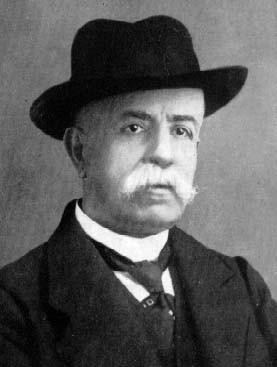Marcel Grossmann (Marcel Grossmann)

In 1900 Marcel Grossmann graduated from the Federal Polytechnic School (ETH) and became an assistant to the geometer Wilhelm Fiedler. He continued to do research on non-Euclidean geometry and taught in high schools for the next seven years. In 1902, he earned his doctorate from the ETH with the thesis On the Metrical Properties of Collinear Structures with Fiedler as advisor. In 1907, he was appointed full professor of descriptive geometry at the Federal Polytechnic School. As a professor of geometry, Grossmann organized summer courses for high school teachers. In 1910, he became one of the founders of the Swiss Mathematical Society. Albert Einstein’s friendship with Marcel Grossmann began with their school days in Zurich. Grossmann’s careful and complete lecture notes at the Federal Polytechnic School were a salvation for Einstein, who missed many lectures. Grossmann’s father helped Einstein get his job at the Swiss Patent Office in Bern, and it was Grossmann who helped to conduct the negotiations to bring Einstein back as a professor of physics at the Zurich Polytechnic. Grossmann was an expert in differential geometry and tensor calculus; just the mathematical tools Einstein discovered were needed for his work on gravity. Thus, it was natural that Einstein would enter into a scientific collaboration with Grossmann.
It was Marcel Grossmann who emphasized the importance of a non-Euclidean geometry called Riemannian geometry (also elliptic geometry) to Einstein, which was a necessary step in the development of Einstein’s general theory of relativity. Abraham Pais’s book on Einstein suggests that Grossmann mentored Einstein in tensor theory as well. Grossmann introduced Einstein to the absolute differential calculus, started by Christoffel and fully developed by Ricci-Curbastro and Levi-Civita. Marcel Grossmann facilitated Einstein’s unique synthesis of mathematical and theoretical physics in what is still today considered the most elegant and powerful theory of gravity: the general theory of relativity. The collaboration of Einstein and Grossmann led to a ground-breaking paper: “Outline of a Generalized Theory of Relativity and of a Theory of Gravitation”, which was published in 1913 and was one of the two fundamental papers which established Einstein’s theory of gravity. Marcel Grossmann died of multiple sclerosis in 1936. The community of relativists celebrates Grossmann’s contributions to physics by organizing Marcel Grossmann meetings every three years.
Born
- April, 09, 1878
- Budapest, Austria-Hungary
Died
- September, 07, 1936
- Zurich, Switzerland
Cause of Death
- multiple sclerosis


